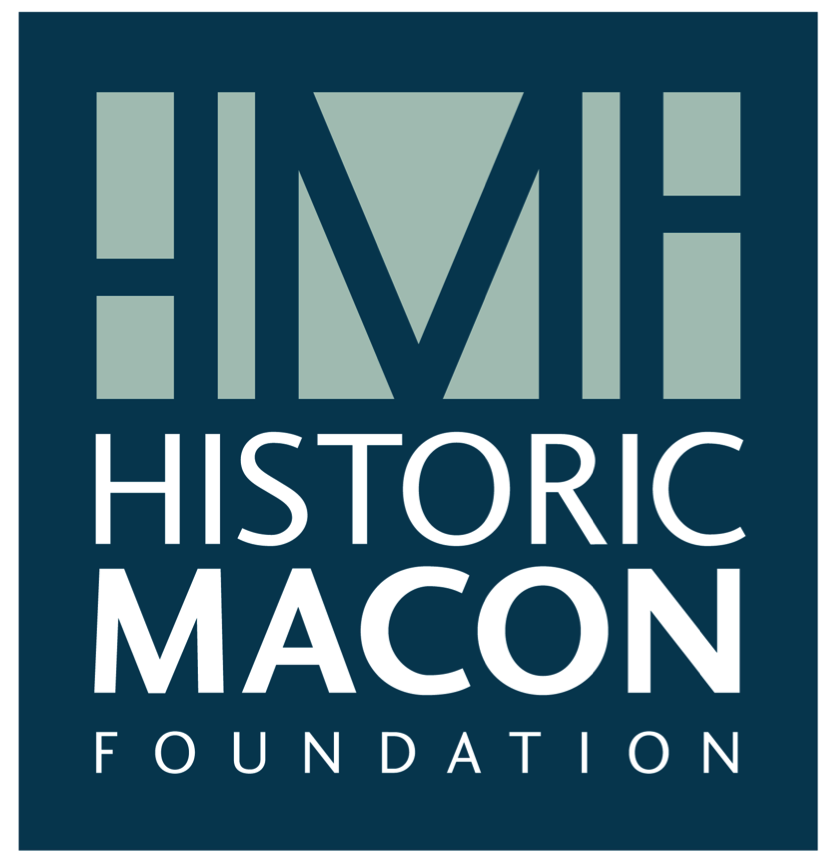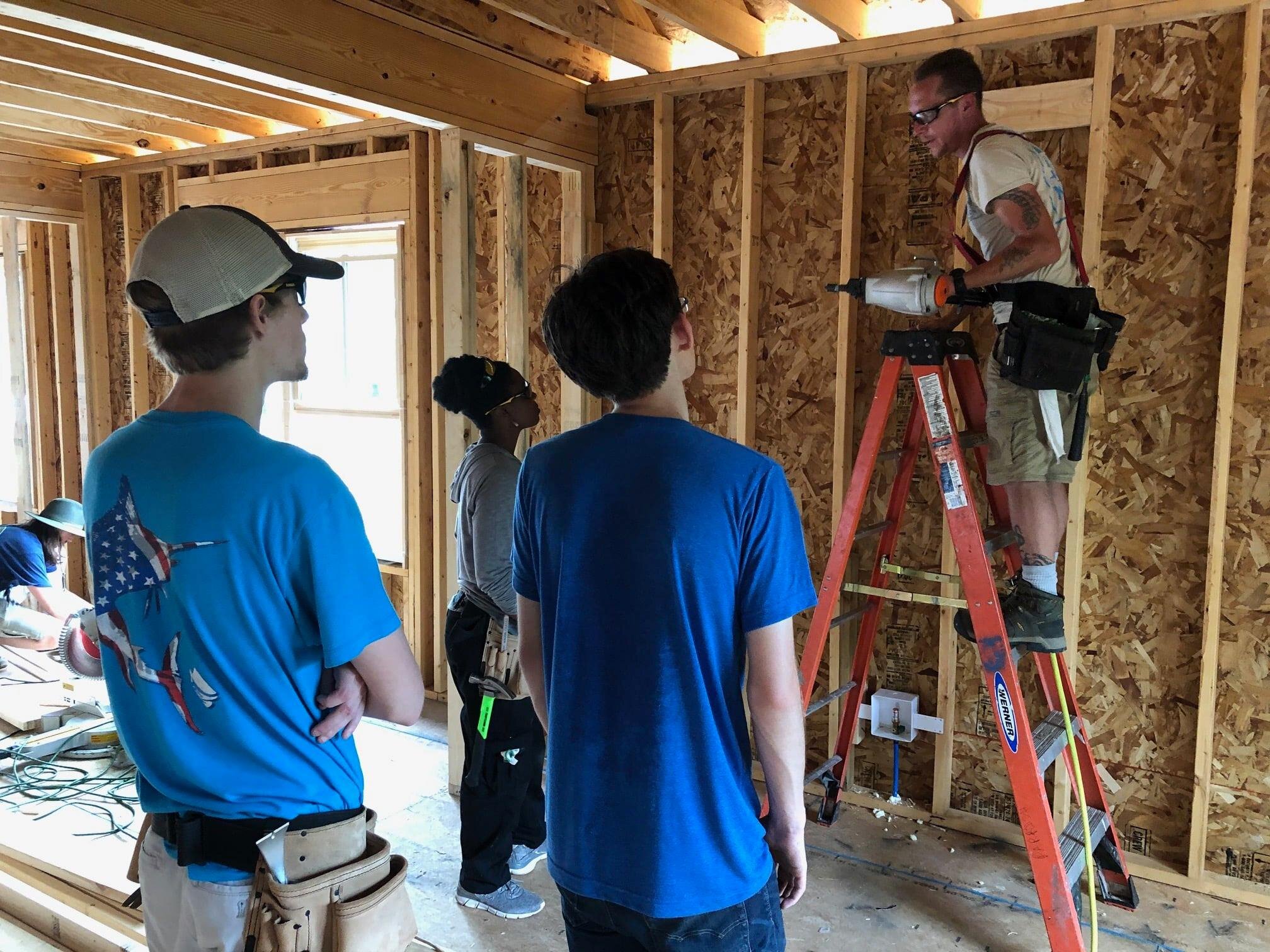Greg Albert couldn’t believe his ears.
The man on the local TV news said something about the free use of tools. All you had to do was sign up, reserve what you needed, then come pick it up.
“He said the address and he said ‘free.’ I said, ‘I can afford that!’ I went down there to see what they had, thinking ‘What’s the catch?’
“Well, there ain’t been no catch.”
Albert soon tapped into Historic Macon Rehabs’ new tool library, and he has become one of its most prolific customers. The new program offers all kinds of yard and construction tools that folks can borrow — for free — for their projects.
In the last month, Albert’s initiative has shown that preservation and restoration involve far more than just lumber, hammers and nails. Now that he’s a regular customer, he’s spreading the word too. Not only is he using the tools to make his own yard look better, he’s going up and down Lilly Avenue, in the Unionville neighborhood, helping his neighbors, many of whom are older.
“Something about this fired me up,” he said. “It gave me inspiration.”
Greg Albert makes the neighborhood field look better.
Early one recent morning, he was across the street from his home starting to mow an open field — well over an acre — that kids in the neighborhood use to play ball. But he also had a blower that he walks up and down the street with, clearing off leaves, dirt, cigarette butts and whatever’s in his path.
Ivory Manning was grabbing a breakfast of eggs, bacon and toast on his front porch before heading off to a painting job. He said Albert mowed his yard recently.
“We watch out for one another over here,” the 65-year-old said. “I’m proud to be his neighbor.”
Arthur Hall, another friend, stopped to chat while driving by.
He said he was looking out a window at home one day and saw Albert blowing away debris near his home.
“He went to the end of the street. The next thing I know, he’s coming back around on the other side of the street. He gets out there like he’s a teenager.” (Albert will turn 70 on July 3.)
“If you find a better neighbor than him, it’s God sent,” Hall said. “That’s a good man.”
Tracey Jackson and her dog, Candy.
Added Tracey Jackson, another neighbor: “He does something just about every day. … I tell him to get out of the heat.”
‘PEOPLE LOVE IT’
Reed Purvis explains the new tool library to Channel 13’s Suzanne Lawler.
Reed Purvis, who oversees the program for Historic Macon Rehabs, said the word is slowly getting out about the new program, which is run through the MyTurn platform (https://bit.ly/35DFvSb). It began May 18.
For many, the concept is strange at first. As Historic Macon worked on the program, it connected with The Well CDC in Akron, Ohio, (https://thewellakron.com/) and picked up good tips for a successful program. Purvis also talked to representatives of the Asheville (N.C.) Tool Library to glean their best practices.
So far, Macon homeowners have signed up for 55 tool loans. Leaf blowers have been the most popular. (There are no gas-powered tools. They’re either corded or have batteries.)
“It’s going really well,” Purvis said. “I definitely expected more wood-working tools to be checked out. We could have spent more money on yard equipment.”
The program was able to stretch its buying dollars thanks to a generous discount on tools from Riverside Ace Hardware.
Judging by responses from those returning tools and comments he’s seen on social media, “People love it,” Purvis said. “I’ve only gotten positive feedback.”
A couple of people have said they wish the program offered a chain saw they could borrow. So that option may be coming in the near future.
It’s all part of an ambitious initiative to boost the trades presence in Macon. Historic Macon Rehabs hired three preservation carpentry apprentices for a 10-week program, training them for entry-level construction jobs. The nonprofit also has begun a series of Saturday workshops to equip homeowners with the knowledge to tackle basic projects on their own. A grant from the Watson-Brown Foundation funded the pilot programs.
The quality of tools in the tool library has impressed Albert.
Before he started taking advantage of the new program, he had to use “whatever I could find, whenever I could find it.” He had no equipment, and even if he did, he has no place to store tools. (“My house is too small.”)
And if you borrow from a friend, “if it breaks down on my shift, it’s my fault.”
Albert and his wife, Sheridan, moved from Oakland to Macon — where she grew up — in 2003, when she took a teaching job with the Seventh-day Adventist school system. He was born and raised in Oakland, and he’s a big Raiders fan.
He has a ready smile and friendly nature, and it was clear during a recent visit how much his neighbors like him and appreciate all the work he’s doing.
But Albert isn’t one to toot his own horn (“It’s just being neighborly.”)
He’s trying to make a small difference in his neighborhood in a way that he can.
And in doing so, he hopes he can inspire others to follow suit.
“People notice me with good-quality tools,” he said. “I try to introduce them to the tool library. I tell ’em, “You don’t have to wait for one. You can do it yourself. People see that it’s working.
“And it’s great for me,” he said. “It has me planning more projects.”




















